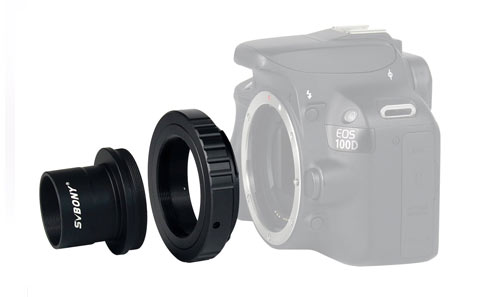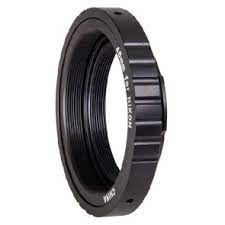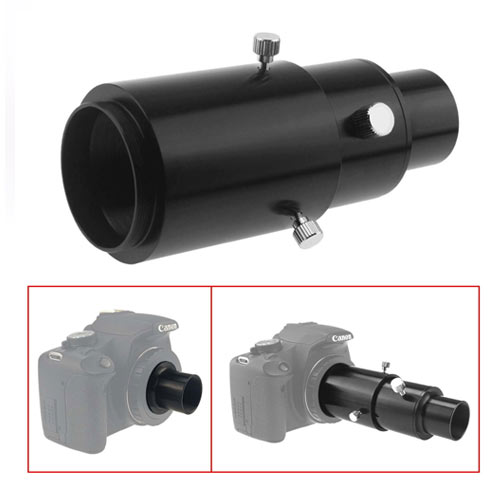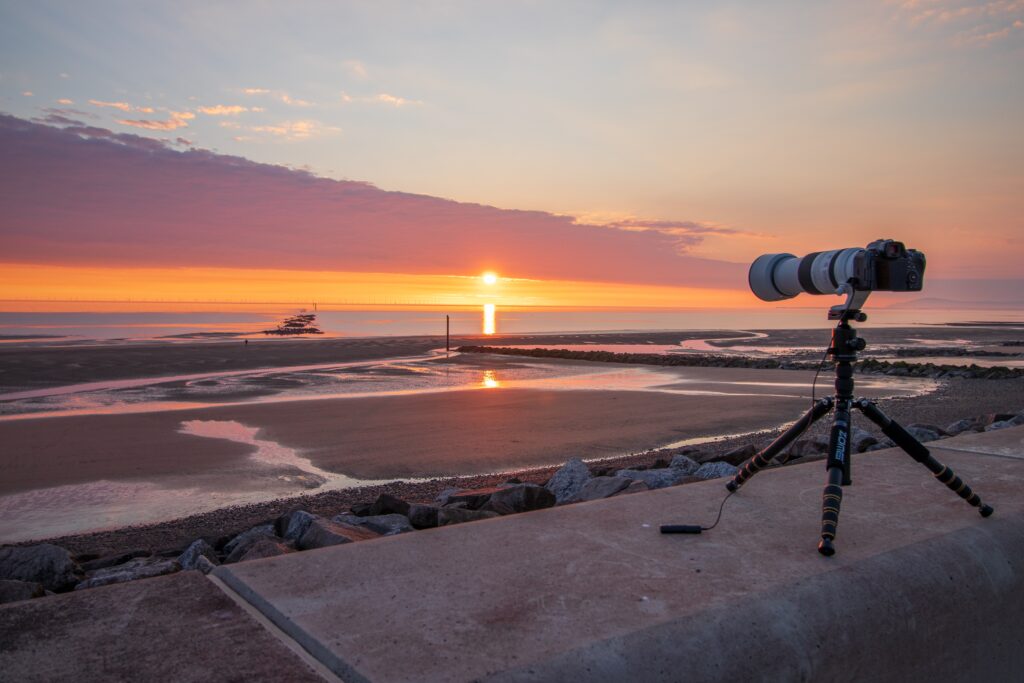Some photographers deal with taking pictures of the planet, pictures of the moon, and other celestial objects, the nebulae or galaxies. To properly take pictures with a telescope, you have to attach your camera to a telescope.
The act of taking pictures with a telescope is very important in the world of astrophotography because whether you want to photograph the planets using the eyepiece projection method or to take deep-sky images of galaxies and nebulae in space using a prime-focus adapter, you have to attach your camera to the telescope first.
A DSLR camera is the best camera to use in capturing deep sky astrophotography images of galaxies, nebulae. If you own a telephoto lens with a focal length of 300mm or more, use your camera lens for astrophotography before attempting to connect it to a telescope.
In deep sky astrophotography, you have to take long exposure images of the night sky. A computerized equatorial mount that matches the apparent rotation of the night sky will be useful for deep sky astrophotography.
Advantages of using a telescope over a camera lens
A telescope is different from a camera lens, but both telescopes and camera lenses have their place in astrography, they both can serve as the best optical instrument for astrophotography. They both lack autofocus and image stabilization, and these features are rarely used in astography. However, there are other advantages of using a telescope over a camera lens.
- It gives you longer focal lengths to achieve more magnification all at an affordable price.
- The telescope has precision focusers designed to focus on stars.
- It comes with dovetail mounting rails for a wide variety of telescope mounts.
- There are convenient mounting options for autoguiding and accessories.
Advantages of using a camera lens over a telescope
- You can attach directly to your DSLR camera body without additional adapters.
- It comes with high-quality lens construction and design.
- The lenses offers extremely fast optics of F/4 and below.
How to use camera on telescope

To attach a telescope to a DSLR camera you need a T-Ring. A T-Ring locks onto the camera body like a lens. Then you need an adapter that threads onto the T-Ring; the prime-focus adapter will be inserted into the focus tube of the telescope just like an eyepiece.

The T-Ring you are using must match the lens mount design of the camera so that it can properly lock in. Then fasten the threaded adapter to your camera and T-Ring with either a 1.25″ or 2″ barrel (nose-piece).
Ensure that the is locked into place inside of the telescope focuser drawtube so that the camera will not shake or move. The eyepiece opening of your telescope has locking screws designed to hold your eyepiece/camera steady. Fasten the camera tightly into the focus tube so that it won’t fall out when your telescope is pointed upwards. Heavier cameras and accessories exert more pressure on your focuser draw tube.
There are telescope designs, especially those designed for astrophotography, that allow you to thread the camera directly to the telescope using your T-Ring. This offers a high level of security for deep sky astrophotography.
To capture deep-sky astrophotography images,use the prime-focus method that does not use an eyepiece or need a Barlow lens in front of the camera. This means you have to use the fixed native focal length of your telescope to photograph all objects.
If you need to really magnify smaller photographs such as the planets or the Moon, the eyepiece projection method will serve you better. This involves placing an eyepiece between the camera body and the telescope with an adapter tube.

A field flattener or reducer can be used to thread the camera and T-Ring directly, this will “flatten” the field of view from the telescope, or reduce the magnification. There are also additional glass optical elements in this accessory which compliment the design of a refractor telescope. A flattener/reducer is 2” in diameter, you can insert it into the eyepiece opening of the focuser drawtube.
Follow these steps to use a camera on a telescope
- Remove the camera lens you mounted to the body of your DSLR. A T-Ring designed to fit your camera body will thread and lock on to the camera just like the lens does.
- There might be a red indicator on your T-Ring that you can line up with the one on your camera body. Once you properly lock in the T-Ring, it stays in place.
- Then go ahead to thread the T-Ring adapter on to the T-Ring that provides a useful barrel to insert into your telescope focuser.
The standard size of a T-Ring adapter is 1.25″ and 2″ . choose the one that fits the openings available on your telescope focuser.
You can pick any of these T-Ring adapters for your DSLR cameras:
- Celestron T-Ring for 35mm Canon EOS Cameras
- SVBONY T2 T-Ring and 1.25″ Adapter for Canon EOS Cameras
- Foto4easy T2 Sony E-Mount Adapter Ring
- Astromania T-Ring and M42 to 1.25″ Telescope Adapter for Nikon DSLR’s
Before choosing, ensure you get the right T-Ring and Adapter that fits your specific camera body.
Once you have attached you can camera, then use the native focal length of your telescope in place of a camera lens. If your telescope has a focal length of 800mm, it will act like an 800mm camera lens for astrophotography.
A remote shutter release cable is useful when you want to take pictures with your camera attached to the telescope, it allows you to capture images without touching the camera, you can even set a sequence of images to fire off on their own.
Where to put camera filters on telescope
Filters in astrophotography are usually placed at the base of the telescope. Filters are important especially in areas with heavy light pollution, but to use filters when a camera is attached to a telescope, you have to choose good filters.
Clip-in filters that sit inside of the camera body is one filter you can use, this filter completely covers the camera sensor of your camera, allowing the T-Ring adapter or camera lens to be mounted in front.
Also Internal threaded filters that sit inside of your camera adapter are useful to use with your telescope.
Before you go…
If you wish to capture images of the Moon, solar system, or deep-sky objects in space; a telescope is the optical instrument for photography to capture everything you need to capture. I hope this guide helps you use your camera on a telescope.

